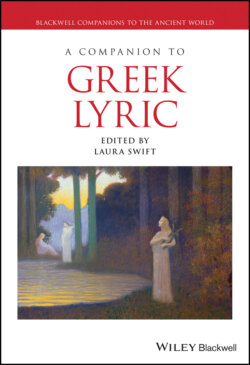Читать книгу A Companion to Greek Lyric - Группа авторов - Страница 76
Physical Description and Layout
ОглавлениеBefore an editor begins to transcribe a text, all aspects of the physical papyrus are measured and described:
the dimensions of the fragment(s)
the color and quality of the papyrus
the direction of the fibers
the location and size of holes
the direction and orientation of any folds
the presence of any sheet-joins (= kollēseis)
the extent of the header, footer, margins, intercolumnar space, and leading (= the space between lines), where extant
the number of lines, letters per line, and width of the lines
the size of the letters
the presence of marginalia, symbols, or corrections (see further, below)
if the obverse also preserves writing, it is similarly scrutinized
Among the insights potentially resulting from physical examination is the type of ancient book from which the fragment derives (i.e., bookroll or codex). But more significant findings are possible, as well. New analyses of the columns in P.Oxy. 10.1232, for example, have clarified the organization of Sappho fr. 44 (Sampson 2016; de Kreij 2020). Regularly recurring folds or wormholes, similarly, can permit the modeling of a bookroll, facilitating the placement of fragments (or columns) relative to one another. And where the fibers of the papyrus align, disparate fragments can be rejoined with some confidence.
